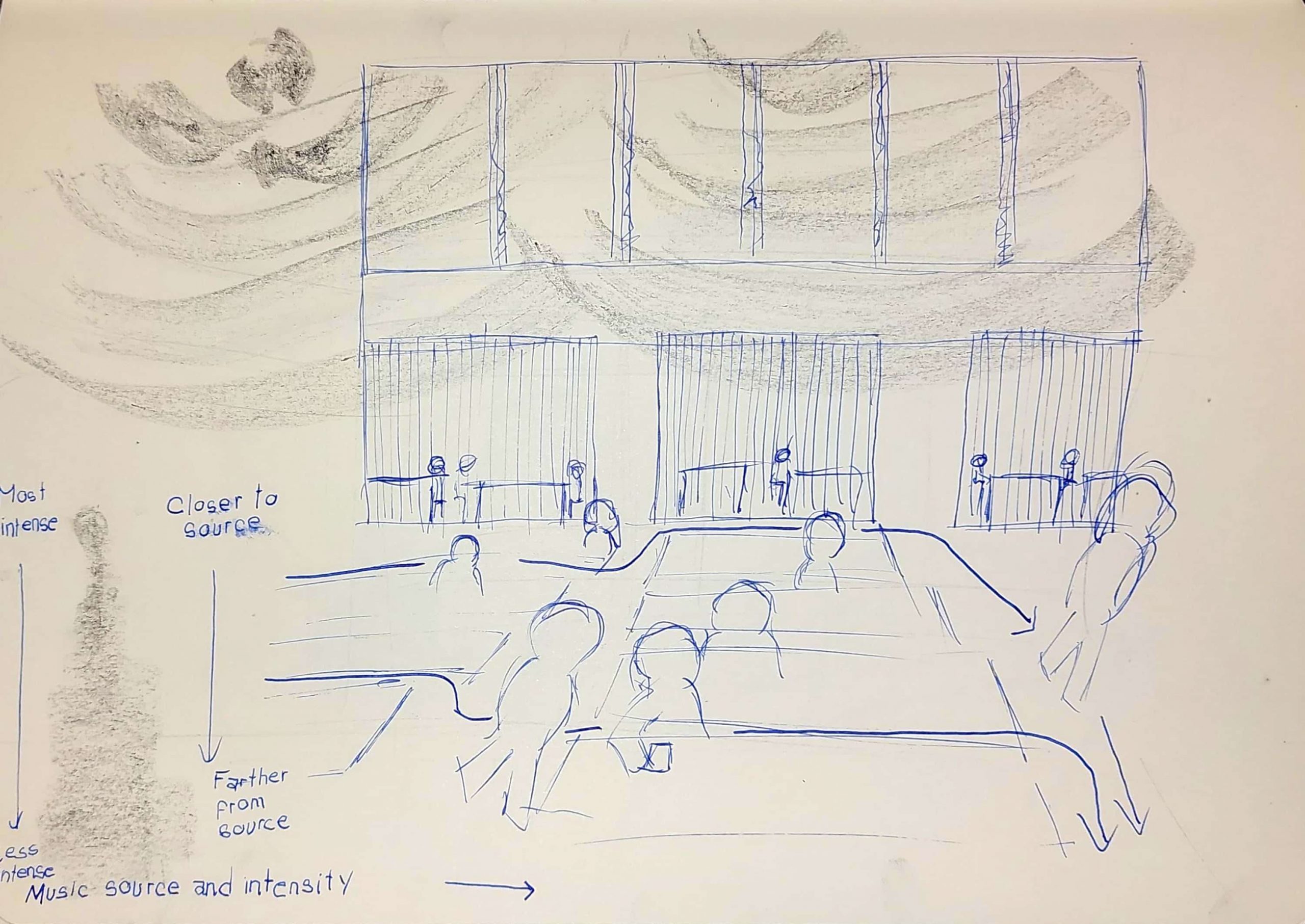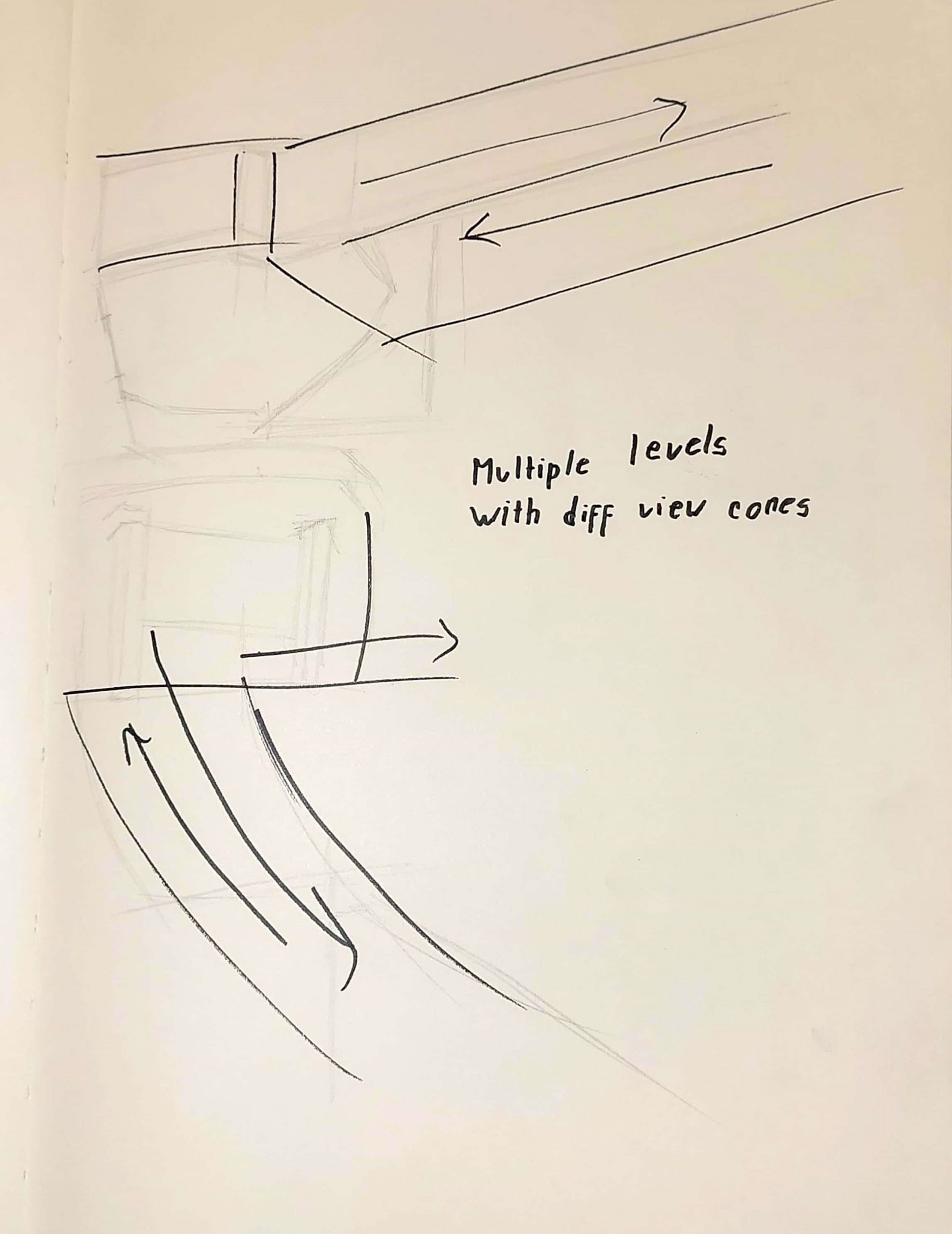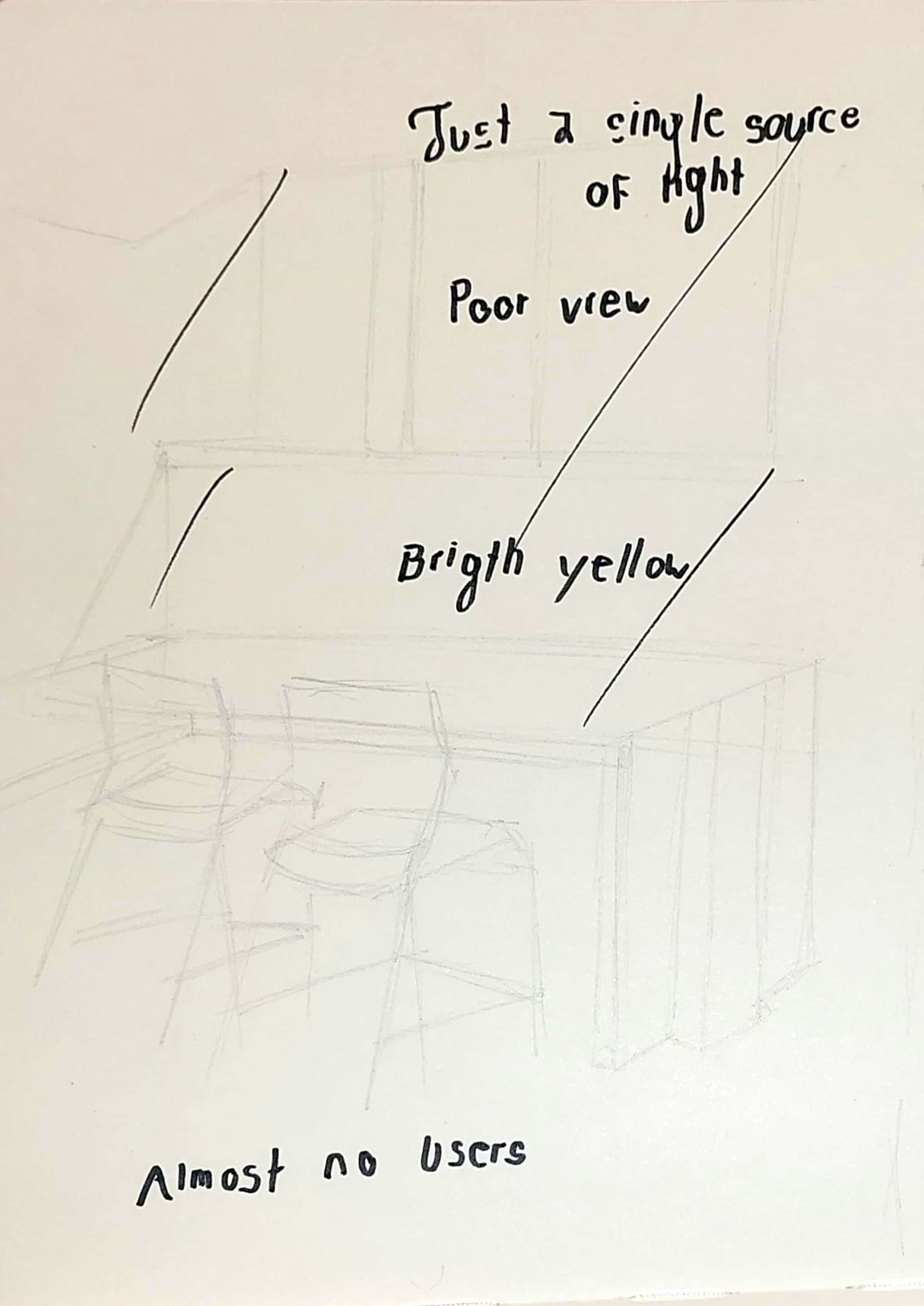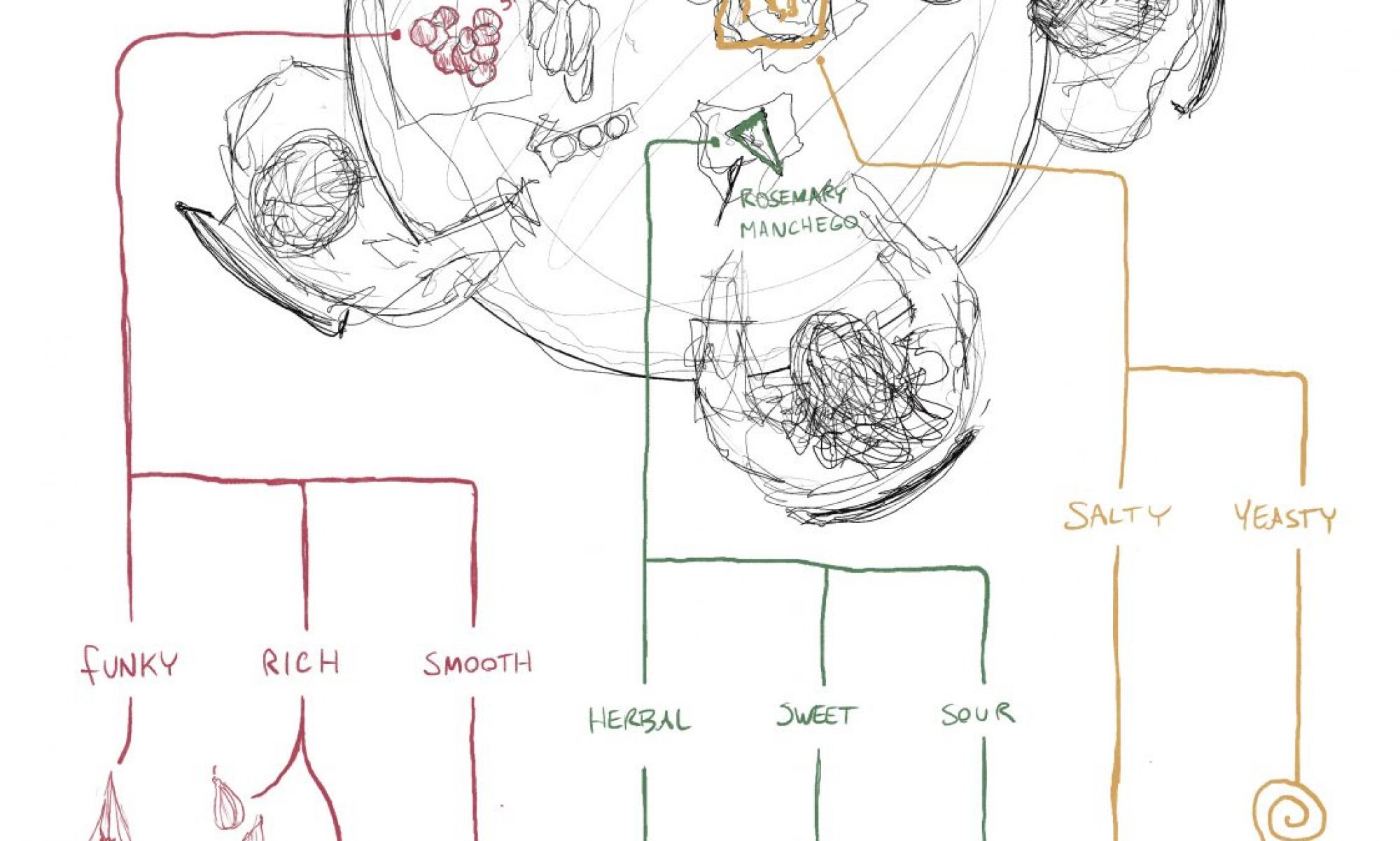In-class exercise:
Orchard Commons


Forestry Building


McLeod Building

At-home exercise:
For this exercise, I wanted to explore how my body engages with outdoor spaces through my beloved bike. While I’m accustomed to biking almost daily, I rarely notice changes in vibration, perception, and positions during the process, as it has become a highly habitual task.
Initially, I began by breaking down the process of mounting a bike and starting to balance until I was able to ride. It is surprising that objectively complicated activities can become almost automatic. It took me a while and a series of trials to discern the movements, changes in tension, and shifts in weight and balance required to ride my bike. I describe this process and the progressive annotations I made as I noticed the different steps.

Stage one and two

Stage three and evaluation of vibration as the main cue for movement
After thoroughly exploring the aforementioned process, I proceeded to embark on a long ride from UBC to Downtown, enabling me to evaluate various outdoor spaces. I realized that the primary cue I use to discern the type of terrain I am on is the vibration felt in my feet, seat, and handlebar.
For instance, riding on the road is smooth, and the vibration is almost unnoticeable, whereas riding on gravel or mountainous terrain is the complete opposite. This experiment also allowed me to comprehend how my body responds to vibration stimuli by adjusting my weight and position accordingly to be more efficient on certain terrains.
As an example, when riding on the beach, I tend to stand on the pedals so that I can control my balance more swiftly, given the reduced traction and increased resistance from the sand. On the other hand, when riding on asphalt, my full weight shifts toward the seat, and I incline my upper body to achieve greater speed.







